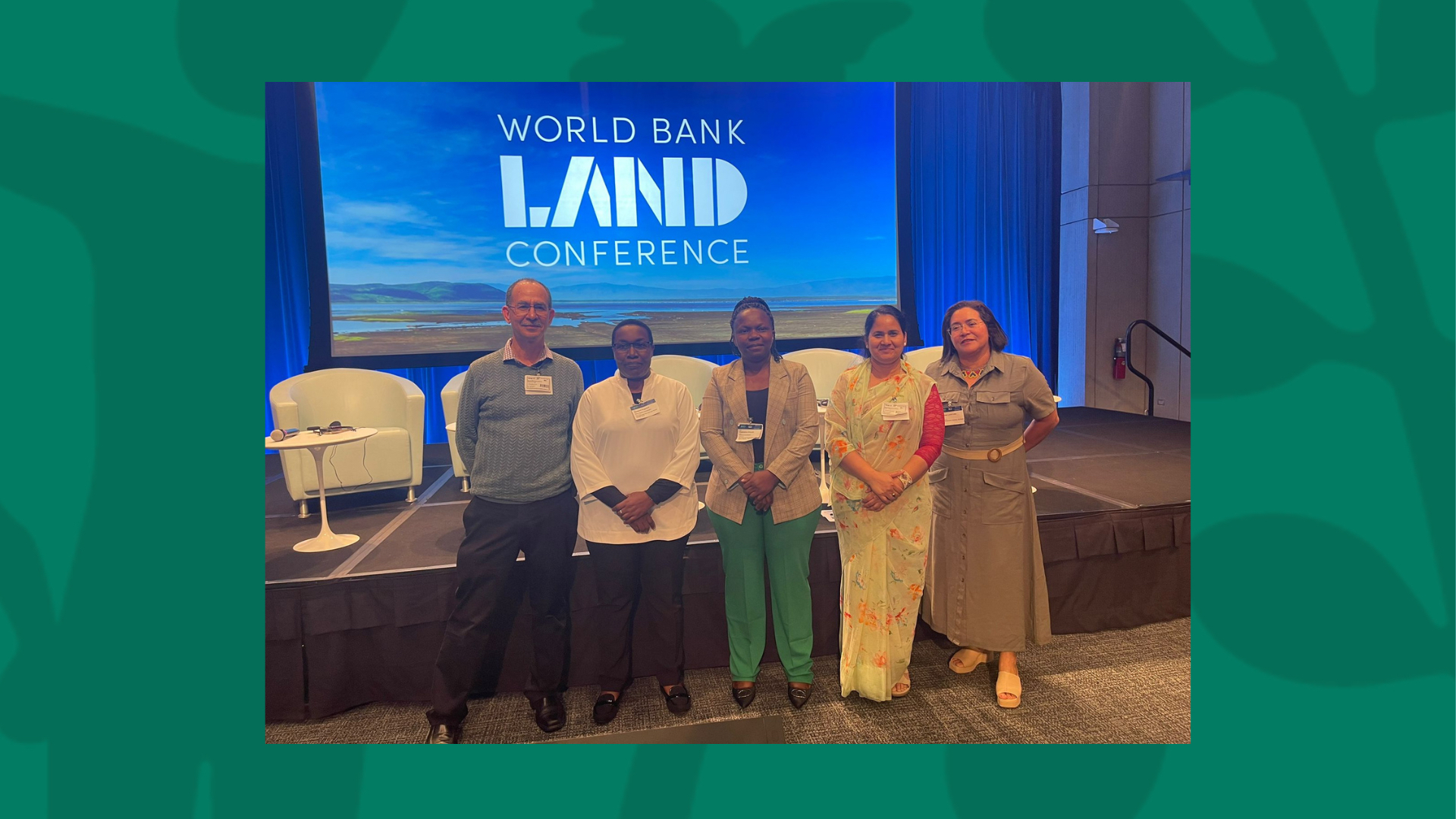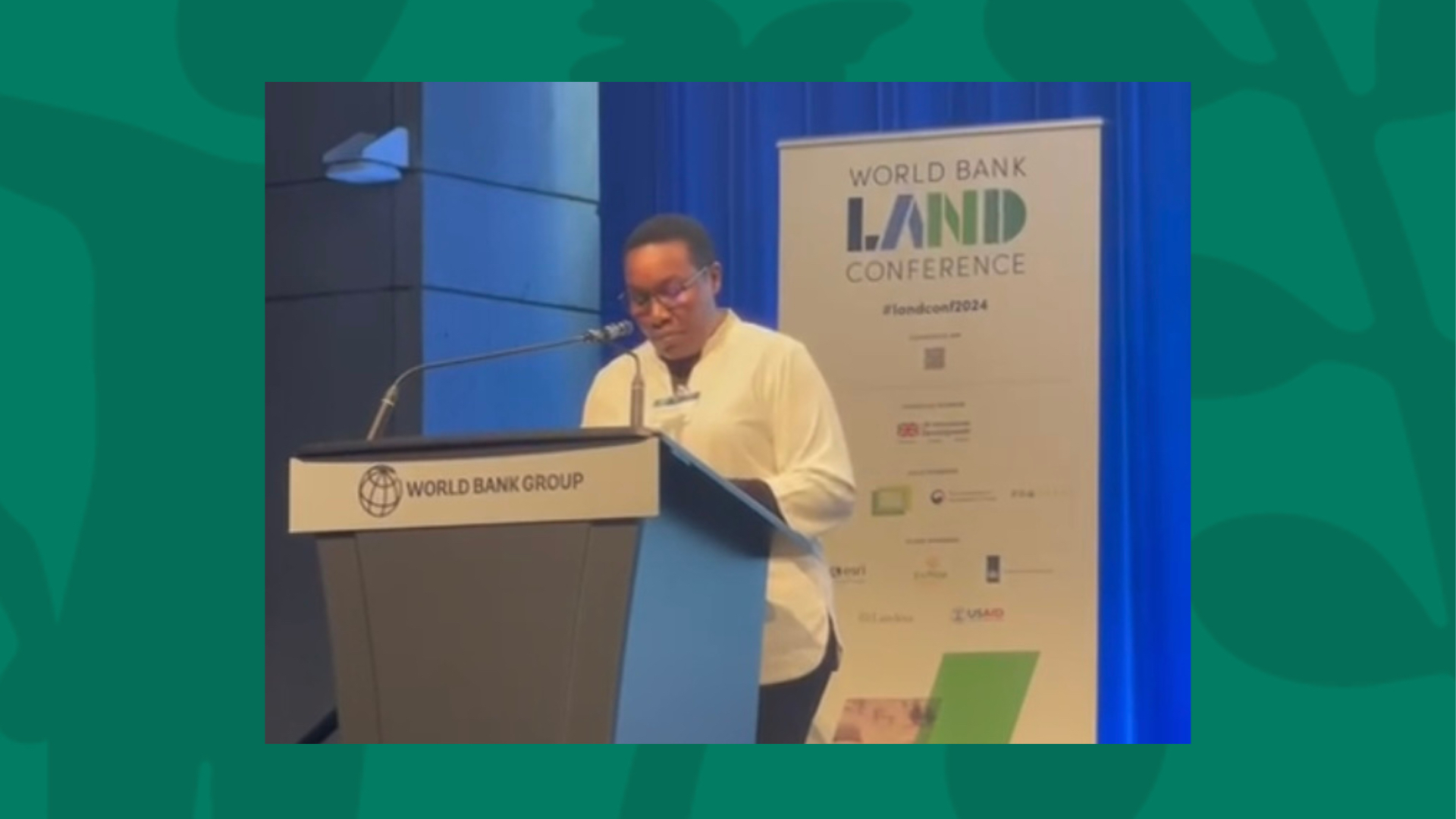2024-05-30
By Jeremy Gaunt
Protecting the global environment requires an understanding and recognition of the role Indigenous Peoples, particularly women, play as guardians of the land.
This was one of the main messages from the World Bank Land Conference 2024, held this month in Washington D.C. It was the first such conference in five years and – crucially – was focused on “Land Tenure and Access and Climate Action”.
“By choosing (this) as the conference’s theme, they signalled that the international community has woken up to the fact that land rights are key for mitigating climate change,” said David Kaimowitz, Tenure Facility’s chief programme officer.
“We were happy to see Indigenous Peoples’ and local communities’ collective land rights, including women’s land rights, get real attention,” he said.

The idea is a simple one, if not always easy to turn into fact. Indigenous Peoples are proven to be the best at protecting their land from the world’s environmentally destructive tendencies. But they need the legal title to the land and the support of governments, international agencies and others to do what they do best.
“Those who live in nature, or live with nature, or work with nature, have to be recognised legally. And land administration and land management systems must be engineered to fulfil that requirement,” said Margaret Rugadya, Tenure Facility’s Africa regional coordinator and, like Kaimowitz, a speaker at the conference.
Rugadya said this was one of her main takeaways from the conference. Another was that Indigenous Peoples must be consulted on what governments and others plan for their land, such as selling carbon credits on the international market.
Free, prior and informed consent, or FPIC as the consultation process is known, is far from universally granted. But even when it is, one constituency often left out is women.
“Women are the people who constantly interact with nature, with forests, with trees with soil. They are the ones who are often the face of climate action,” Rugadya said. “If we don’t recognise, find the right tools, find the right way to make sure they are part of leadership, they are part of benefit sharing, they are part of representation in negotiations, then we are missing an essential part.”
Rugadya gave the conference concrete examples of how indigenous women are taking environmental action into their own hands with the support of Tenure Facility funds.
One instance is a project in the Amazon basin and the Cerrado tropical savanna of eastern Brazil. Some 300,000 rural, mostly Afro-descendant women have come together in the Inter-State Movement of Babassu Coconut Breakers to push for laws to protect babassu palms and give women the rights to harvest them anywhere.

Another is in Nepal, where women have organised themselves into forest user groups to control illegal smuggling of forest products, especially wildlife products. As a group, they have control over more than 2.5 million hectares of forests.
Currently, where free, prior and informed consent can be seen as most crucial is around carbon credits.
In a nutshell, carbon credits are bought by polluting entities to offset their greenhouse gas emissions. Countries with forests can sell credits on the market because – as long as they remain intact – the forests act as carbon sinks, soaking up the CO2 being released elsewhere in the world.
But one issue affecting people who live in the forests is that governments can and are selling credits for land that does not necessarily belong to them and without consultation.
Raymond Achu Samndong, Tenure Facility’s monitoring, evaluation, and learning manager, told the World Bank conference that part of the problem was land titling. He underscored how carbon forestry programs should not be designed before indigenous and local community land rights are secured.
"By choosing (land tenure and access) as the conference's theme, they signalled that the international community has woken up to the fact that land rights are key for mitigating climate change."
Samndong gave Guyana as an example. There, Indigenous Peoples manage 40 percent of the country’s forests, but they only have legal title to 15 percent. So, the government only provides 15 percent of the carbon credit benefits to the people managing the land.
“This clearly shows a strong incentive for the government not to title the remaining 25 percent,” Samndong said, suggesting that carbon credits could be slowing land titling to Indigenous Peoples. “The government doesn’t want to share these payments, these benefits.”
He said many communities are open to carbon payments, but their concerns are often poorly addressed, leaving them vulnerable to exploitation due to a lack of understanding of the carbon market.
Despite this, carbon credits can be an opportunity for Indigenous Peoples.
Rugadya said the conference had given her some new things to think about, including carbon credits.
“I listened to an example where groups of communities were repurposing their forest reserves from logging to carbon offsetting,” she said. “If communities are very organised, it is going to be very possible for them to get income and resources, but they need an enabling environment, they need to be organised.”
She said she had also come to realise that Indigenous Peoples were not just contributors to environmental protection, but shareholders in its success. And they can only become shareholders and major stakeholders, if there is an improvement in getting them legally recognised rights over forests and land.
“If you don’t give them legal rights, then you will not be able to recognise them as shareholders, you will begin to think of them as contributors,” she said.
Articles